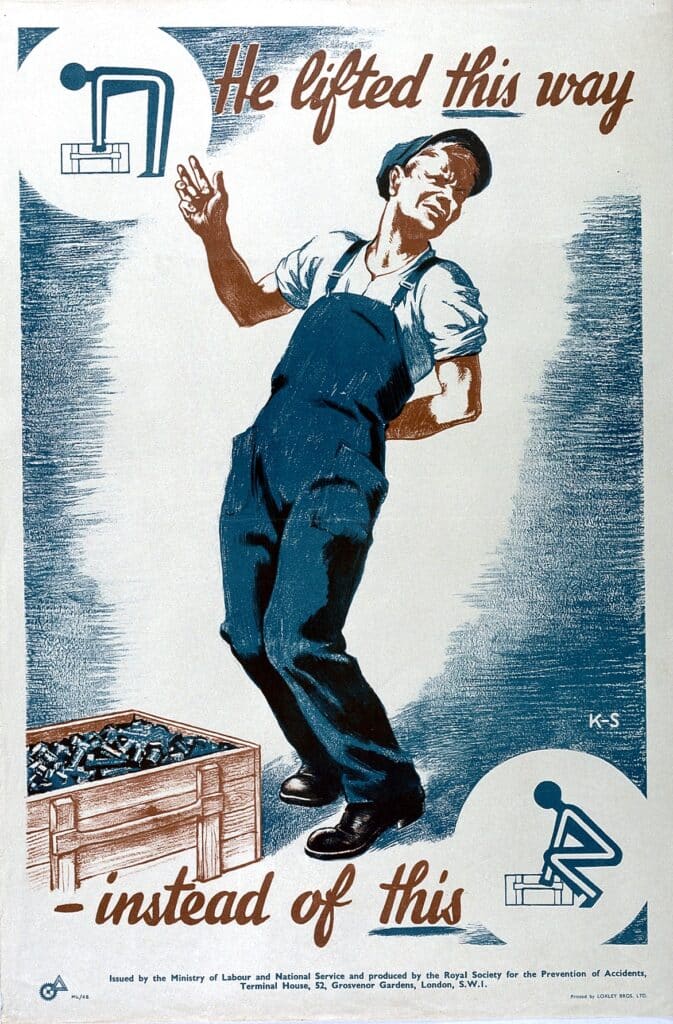
Let’s review what these common workplace injuries are, and then dive into more detail about what to do when you’re injured on the job in Oregon and when to seek chiropractic care.
Chiropractic care can be helpful for work injuries, especially since most work injuries are musculoskeletal injuries. Before the COVID-19 pandemic, the two most common workplace injuries were 1) overexertion and bodily reaction; and 2) slips, falls, and trips. Let’s review what these common workplace injuries are and then dive into more detail about what to do when you’re injured on the job in Oregon and want to seek chiropractic care.

These injuries are either sudden injuries from specific movements or those that develop over time from the same movement. The back is the most commonly injured body part in this type of injury, and it can be caused by non-impact injuries, which result from lifting, bending, twisting, carrying, and throwing. With repetitive injuries, wherein the worker repeats specific movements over and over (like typing at a keyboard or grocery checker), it’s common to be diagnosed with carpal tunnel syndrome or other hand injuries.
At work, sprains, strains, and tears can result from an accidental fall, trip, or slip. It’s typical for employees 55+ to suffer from this kind of injury, especially if they work in the construction field, where there are many tripping hazards and uneven surfaces.
There are three body parts that are most commonly cited in workplace injuries.
As we mentioned before, the back is a very common location for pain and injury. Lumbar sprains and strains are the most common, with disc injuries following close behind in likelihood. Back pain typically stems from overexertion or lifting heavy objects. Improper lifting is often to blame for back injuries. An example of improper lifting is lifting while bent forward and then twisting. Warehouse employees and nurses are some of the most likely workers to get this type of injury.
Repetitive injuries often impact the upper extremities when it comes to workplace injuries. Repetitive injuries commonly affect hands, shoulders, elbows, and arms. Carrying things or doing the same movement repeatedly, day in and day out, can cause these upper extremity injuries. Carpal tunnel in office jobs and ganglion cysts in retail jobs (from scanning at the check-out) are common in this category. Rotator cuff injuries are also common injuries.
Slips, falls, and trips in the workplace tend to impact the lower extremities, such as the hips, knees, ankles, and legs. For example, when a person falls, they hit the ground with their knees, twist their ankle, land on their hip, or overextend leg muscles (or even break a leg bone). In addition, just one misstep from one floor to the next can cause lower extremity injury, especially in those 55 years old and older, due to your body’s declining proprioception (ability to distinguish the movement and space around you).
There are a few steps you’ll want to make sure you take immediately if you’re injured at work in Oregon:
It’s kind of a tricky topic. You’re not alone when you have questions about workplace injuries and chiropractic. Keep reading for the most frequently asked questions:
Yes. Even if you went to urgent care first, you can transfer your care to your chiropractor.
Chiropractic care should be part of your recovery if you have work-related musculoskeletal injuries. Dr. McHattie has over a decade of experience in treating and managing work injuries. Getting injured on the job stinks and can be confusing to navigate. We can help you with any questions about your injuries and work comp claim. Our goal is to help you recover quickly, so you can safely return to work.
Copyright @2025 Element Chiropractic — 875 SW Rimrock Way Suite 103, Redmond, OR 97756